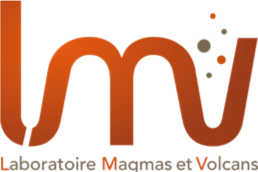Continuous, long-term monitoring of volcanoes is essential to detect changes in activity and morphology, and to anticipate eruptions. We have developed our own observation stations at LMV-OPGC The stations are equipped with : (1) a camera (DSRL) to take high-resolution photos and long exposure night photos (2) a webcam for filming eruptions (3) and a thermal camera to analyse temperature changes. The stations were installed on the Merapi volcano, in Indonesia. The stations are energy self-sufficient. They are connected by WiFi to the BPPTKG (Merapi Observatory) network and can be controlled remotely. The stations can be programmed to take photos automatically. Photos can also be taken in real time by a remote user. The stations can receive a signal from the Merapi seismic network to trigger video recording automatically. Initially, four stations were installed: two at the summit and two on the flanks. Their stereoscopic positions allow us to calculate the precise positions in space of the objects visible in the images. The stations enabled us to observe the growth of the lava dome (Kelfoun et al., 2021) They have also taken photos of pyroclastic currents and gain a better understanding of how they originate (Kelfoun and Gueugneau, 2022; Kelfoun and Proaño, 2023) Finally, they have made it possible to quantify the summit displacements associated with a major slide on the western flank between 2020 and 2021.
On 10 July 2023, a volcanic eruption began in Iceland, close to Litli Hrútur in Reykjanes Peninsula. In collaboration with the Univeristy of Buffalo and the University of Iceland, a team led by Oryaëlle Chevrel (LMV-OPGC-OVPF-IPGP) carried out in situ measurements on the viscosity of lava flows. Two instruments were used. A penetrometer, built by the University of Buffalo, measured the penetration force and displacement length of a penetrating piston. A rotational viscometer, developed at LMV-OPGC, measures the rotational speed of a shear vane and the resistance to rotation. The team also took lava samples that will be analised in our laboratories. These data will be integrated into numerical lava flow models, with the aim of improving forecasting of areas affected by flows.


